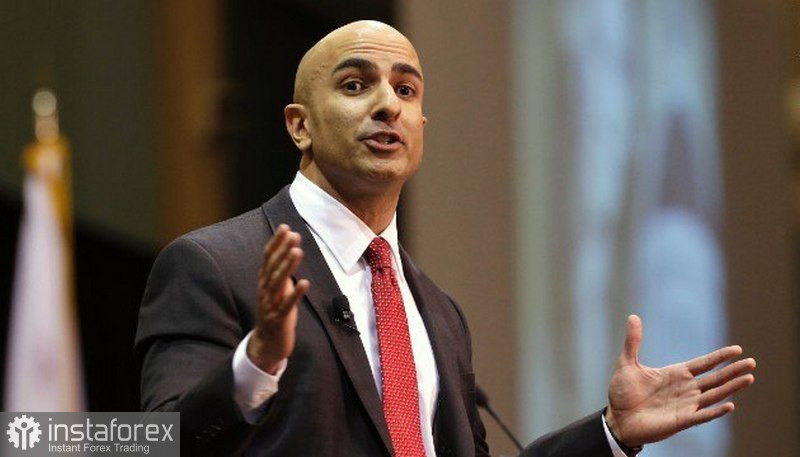Yesterday, the US dollar jumped against risk assets like the euro and the British pound. This happened after a statement from Neel Kashkari, the President of the Federal Reserve Bank of Minneapolis. He said that despite the steps taken to curb US inflation, it was still higher than policymakers were comfortable with. " "Right now inflation is coming down — we've made some good progress," Kashkari said at a Minneapolis conference. "I want to see convincing evidence that inflation is well on its way back down to 2%, and then we can allow it some time to run," Kashkari said.

Kashkari, who has a voting role in monetary policy this year, expressed his surprise at how resilient the economy had been. He noted that the job market remained strong, even with the Federal Reserve's aggressive rate-raising campaign. "The question on my mind is, have we done enough to actually get inflation all the way back down to our 2% target. Or do we have to do more," he added.
Notably, policymakers announced a quarter-point rate increase during their meeting last month. As a result, the federal funds rate reached 5.5%. This increase followed a pause taken during the June meeting, where officials indicated that two more hikes might be needed this year.
"Are we done raising rates? I'm not ready to say that we're done," Kashkari commented. But with recent positive signs on inflation, he said, "we can take a little bit more time to get some more data and before we decide whether we need to do more."
Curiously, a report issued last week showed inflation continued to decline in July. Moreover, core prices, which exclude food and energy, showed the smallest increase in over two years.
During several statements last week and this week, officials said they are closely assessing incoming data to shape future policy. Today, the July minutes of the Federal Reserve's monetary policy meeting will be released. It is likely to reveal that only a few officials support keeping interest rates unchanged until year-end. If policymakers' tone is not as dovish as market participants expect, demand for the US dollar might return.
Regarding today's technical picture for EUR/USD, the pressure on the euro remains the same. To regain control, buyers should keep the price above 1.0920. This would pave the way to 1.1950 and allow the pair to test 1.0950. From there, the price may climb to 1.1020. However, it would be quite difficult without support from major traders. If the pair drops, I expect significant actions from major buyers only around 1.0880. If they fail to be active, it would be wise to wait for a low of 1.0840 or consider long positions from 1.0810.
Meanwhile, the pound sterling continues trading within the channel. The pound sterling will rise only after bulls gain control over the 1.2725 level. Regaining this range will boost hopes for recovery to 1.2750 and 1.2770, after which we can talk about a surge to around 1.2815. If the pair falls, bears will attempt to take control over 1.2690. If they succeed, a breakout of this range will hurt bulls' positions and push GBP/USD to a low of 1.2660, with the potential to drop further to 1.2620.





















